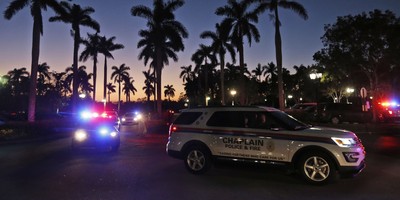HARPERS FERRY, W.Va. – Stepping onto the platform of a Victorian-era train station here, you wouldn’t know you are standing over the foundation of Harpers Ferry’s original armory and arsenal buildings.
Built in 1799, the federal armory was championed by President George Washington because of his familiarity with the town as a former investor and first president of the Patowmack Company, which was formed to complete improvements along the Potomac River.
“It is the very arsenal that drew John Brown here for his infamous raid,” says John Addy, mayor of the town of 320 residents along the Potomac and Shenandoah rivers.
“Three-hundred-twenty is also about the number of people who once worked in the arsenal,” he adds.
Between 1801 and the outbreak of the Civil War in 1861, this was a thriving industrial market of more than 3,000 people. The armory was in full production; several industries, including a sawmill, a flour mill, a machine shop, two cotton mills, a tannery and an iron foundry, flourished here.
This also was home to many of Washington’s relatives, Addy says, and his “descendents still live here, in the same home his brother Charles had built when George was president.”
The town’s fortunes changed in 1859 with the arrival of John Brown, wanted for committing murder during the “Bleeding Kansas” slavery battle, and his “Provisional Army” of 16 whites and five blacks.
He planned to seize the arsenal’s guns in order to arm rebelling slaves throughout the South.
The raid ended quickly: After 36 hours, U.S. Marines led by then-Lt. Col Robert E. Lee stormed the building and captured Brown.
He was tried, convicted and executed in less than two months. One handsome young man in the crowd of hundreds who witnessed his hanging was actor John Wilkes Booth.
Recommended
In April 2011, our country marks the 150th anniversary of the Battle of Fort Sumter, which most historians consider to be the start of the Civil War (although, technically, the first shots were fired at Sumter in January 1861).
One can argue, however, that Brown's raid on Harpers Ferry really was the first shot, says James McPherson, Civil War historian and professor emeritus of history at Princeton University. “It vastly intensified Southern fears of Northern anti-slavery forces, and Brown's martyrdom by hanging increased anti-slavery sentiments in the North,” McPherson says.
When Harpers Ferry marked the sesquicentennial of Brown’s raid in 2009, Mayor Addy says, very little push-back came from residents. “There were some letters to the editors in the papers and, privately, a handful of people questioned the political correctness of the festivities,” he recalls.
“Some people considered Brown a terrorist, but most blacks consider him a freedom fighter.”
In many respects, everyone – blacks, whites; Northerners, Southerners – is uncomfortable with the issues surrounding the Civil War. It was the most contentious time of our history, yet it did happen, we did learn from it, and we did move forward.
The businesses, homes, even the cobbled streets of Harpers Ferry remain remarkably tied to a different era. You almost feel as though you are somewhere very special, whether you arrive here by train, hike through on the Appalachian Trail, or come by car to retrace history.
“What happened here in 1859 caused a panic across the country,” says Caroline Janney, a Purdue University history professor. “While the majority of white northerners denounced Brown’s actions, there was enough mixed reaction (church bells ringing in his honor, newspapers praising him) to cause a stir among white southerners.”
A massive slave rebellion long had been one of the South’s great fears.
“As the 150th anniversary of the war approaches, we should seek to avoid the pitfalls that beset the Civil War’s centennial, which was mired in racism and Cold War politics,” Janney says.
That does not mean we should avoid controversial topics such as slavery.
By engaging in thoughtful, meaningful dialogue about the war’s causes and consequences, one hopes we can better understand contemporary politics and race relations, Janney explains.
Mayor Addy says the town’s mayor during Brown’s raid, Fontaine Beckham, died during the attack. “People expect you, as mayor, to do something,” he says. “Well, he did. Beckham stuck his head out and was shot.
“The townsfolk still expect the mayor to do something even today,” Addy said. “Only now the worst thing I have to do is to pick-up the trash.”

























Join the conversation as a VIP Member